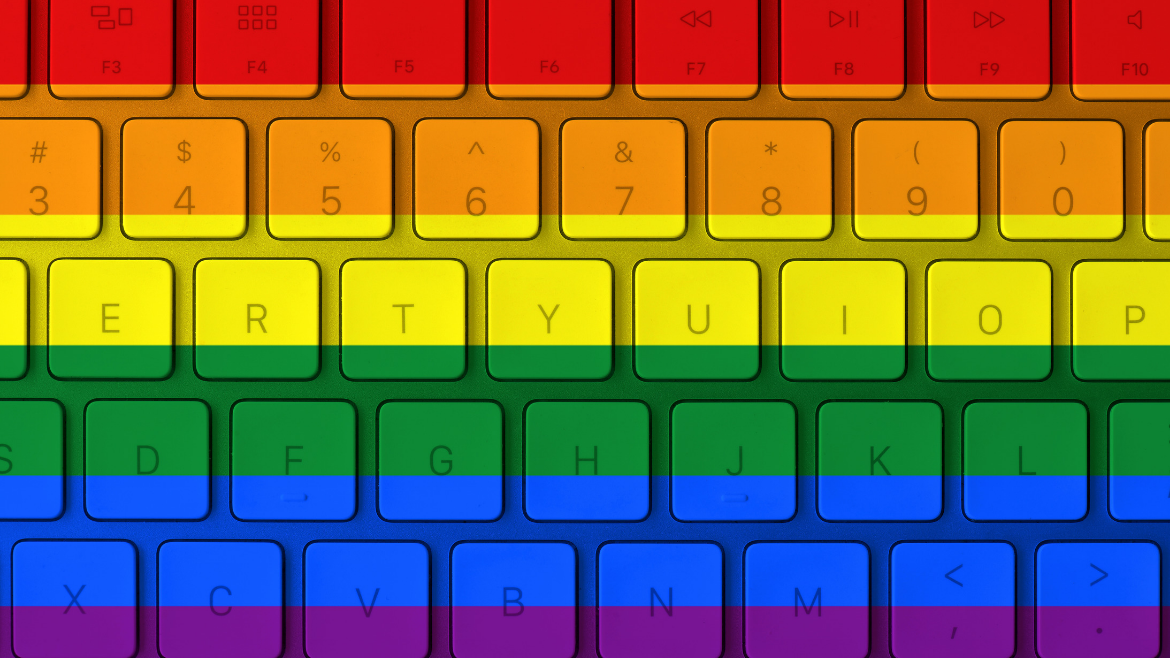For many lesbian, gay, bisexual, transgender and queer (LGBTQ) people, June is a festive month, when many Western cities host parades and other events aimed at drumming up support for their community. It has also, increasingly, become a time when companies rush to declare their LGBTQ bona fides, via splashes of rainbow in their logos, high-profile sponsorship of LGBTQ pride parties and other public-facing initiatives. The technology industry is no exception, particularly in the San Francisco Bay Area, where a famously liberal culture permeates many of the world’s largest tech firms.
The rise of Silicon Valley has seen San Francisco’s pride parade transform from an edgy showcase of defiance into a who’s who of corporate behemoths over the course of a few decades. In many respects, this evolution is welcome, and far from mere tokenism: a significant share of the American companies that earned perfect marks on their internal pro-LGBTQ policies in a recent index released by Human Rights Campaign, a pressure group, are technology firms based in the San Francisco Bay Area—some, like Apple, Google and Facebook, rank among the most profitable in the world. Many of these organisations view LGBTQ equality as a moral imperative that is also good for business, in terms of drawing in both top talent to their workforce and, potentially, the lucrative “pink dollar” of LGBTQ consumers.
Yet this year’s pride celebrations are placing the technology industry under renewed scrutiny. The immediate dispute centres on Google subsidiary YouTube, which is accused of hypocrisy for showing support for LGBTQ people while refusing to remove videos by a right-wing commentator that contained homophobic slurs directed at a reporter LGBTQ activists—including several of Google’s own employees—have called on San Francisco to ban the company from participating in its pride parade, something the city said it would not do.
Queer qubits
YouTube’s troubles have punctuated a long-simmering debate around LGBTQ diversity in the technology industry. Many lament the lack of representation by letters in the LGBTQ acronym other than “G”—in particular, white or Asian gay men. “The companies we work with are heavily male-dominated,” says Leanne Pittsford, founder of Lesbians Who Tech, an advocacy group pushing for greater inclusion for marginalised people in the industry. “Technology should represent all the people that live in this country.”
Some believe a more rainbow-hued tech sector would ameliorate several of the issues found in technology itself, such as bias in the machine-learning algorithms that are becoming increasingly ubiquitous. Some organisations have already taken flak for rolling out automated systems that proved highly offensive, such as a bot that started spewing racist language after interacting with people on Twitter, or a piece of facial-recognition software that identified black people as gorillas.
The awe-inspiring power of artificial intelligence (of which machine learning is a subset) recently came into focus for the LGBTQ community after researchers announced that they had invented an algorithm that could accurately predict sexual orientation after scanning pictures of faces from a dating website. This raised fears that repressive governments or groups could use such a system to discriminate against—or even persecute—people based on nothing more than a photo. LGBTQ people may also face heightened privacy concerns on social media, as exemplified by the forced sale of Grindr, a hook-up app for gay men, by its Chinese owner, after the US government raised concerns that it could expose the HIV status and other private sexual details of Western officials who use it to the Chinese government.
Rainbow connections
These examples underscore the complex role that the LGBTQ community plays in the technology industry, and how technology can act as a double-edged sword for the community. Technology has undoubtedly enabled the spread of LGBTQ rights on a global scale, as LGBTQ people use Facebook and other platforms to organise and find a voice. Some of the most prominent personalities in the field—including Tim Cook, CEO of Apple, and Sam Altman, chairman of Y Combinator, a start-up accelerator—are gay and have used their public profile and influence to advocate for acceptance.
At a recent LGBTQ pride party hosted by one of the Bay Area’s most prominent technology companies, the industry’s recent controversies were hardly front-of-mind, even as some newcomers to the area seemed awestruck at the confluence of capitalism and community boosterism on display. “I’m amazed at how companies are falling over themselves to ‘do the pride thing’,” said one Canadian attendee.
Joellyn Weingourt of Equality Federation, which organised the soirée, says the aim of the event was to remind people of the ongoing work needed to safeguard equality, both in the technology industry and more broadly. “We want people to feel empowered to speak up about diversity and inclusion issues within their companies,” she says. Although many LGBT employees within the Bay Area’s technology sector are already well empowered, the industry as a whole seemingly has more work to do to become an inclusive place for all.
The views and opinions expressed in this article are those of the authors and do not necessarily reflect the views of The Economist Intelligence Unit Limited (EIU) or any other member of The Economist Group. The Economist Group (including the EIU) cannot accept any responsibility or liability for reliance by any person on this article or any of the information, opinions or conclusions set out in the article.




